California is a large, gorgeous state with varied terrain and a large percentage is big, open, beautiful desert. There’s many places to go out to photograph and enjoy the fresh air.
Regardless of whether you visit the desert during colder or hotter months, your body will need plenty of fluids. You need to bring a lot of water when venturing out, even if you are not going too far from the car. This is not a time to say, “I typically don’t need a lot of water.” No. Bring a lot of water. And wear sunscreen and a hat while you’re at it.
Joshua Tree National Park
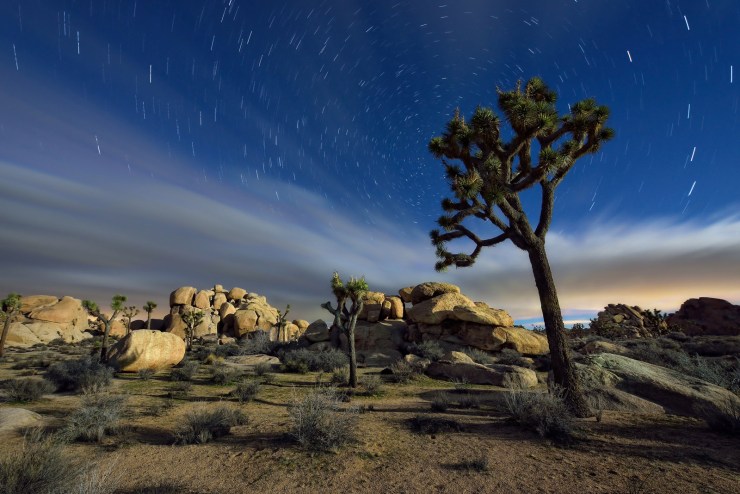
Joshua Tree National Park, located in the Mojave Desert, is a photographer’s paradise, day or night. My favorite time to photograph is at night or during sunrise or sunset.
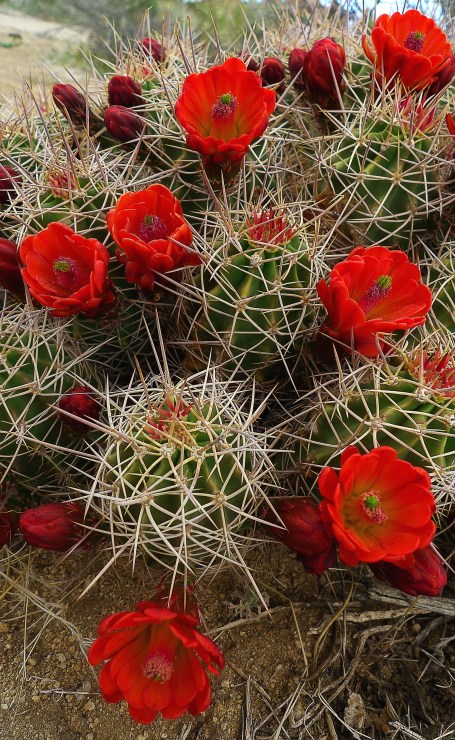
The park has experienced enormous growth recently. In 2010, for example, the park received 1.43 million visitors. In 2019, it was about 3 million, more than double in nine years. There are no signs of slowing either. The surrounding area has also seen an explosion in AirBnBs and skyrocketing housing prices.
The Park has plans to change the entrance to accommodate the rush of visitors. However, much of the park is not that different from when it was a National Monument, and it gets extremely crowded during the cooler months.
A great way to avoid the crowds is to arrive very early. Or perhaps arrive in the late afternoon to catch sunset.
Entering the park from the west entrance
There are three entrances to the National Park. Entering the west entrance of the park on Park Boulevard from the town of Joshua Tree, you are rewarded almost immediately with stunning views. Along the main road, there are many pull-outs that you may use to explore further. This is one of the fantastic aspects of the park. You really do not need to venture very far from the car to see mind-blowing desertscapes.
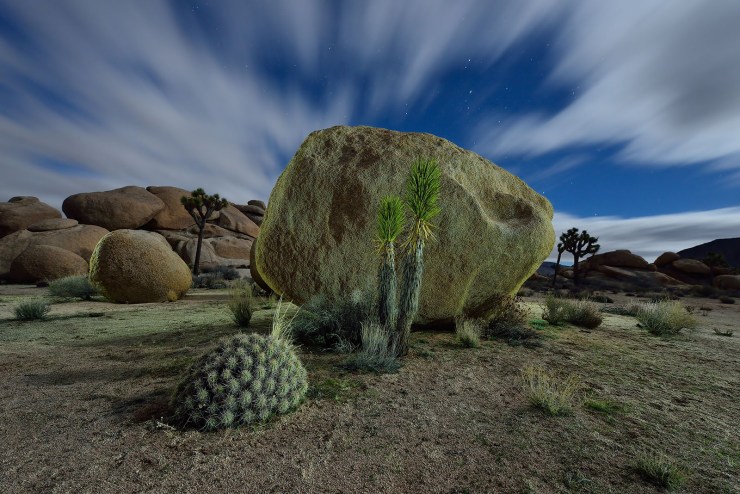
In the heart of the park
Turn into Hidden Valley Picnic Area, a day use area opposite the road from the campground. There is a nature trail loop, which is quite scenic. But perhaps my favorite part for photography is wandering through the back part of the picnic area and into the desert. There is a balancing rock formation and some really beautiful Joshua Trees and rocks.
Going the opposite way across Park Boulevard is Barker Dam. Here and beyond, around the Wonderland of Rocks, are some of the most amazing rocky formations in the park.
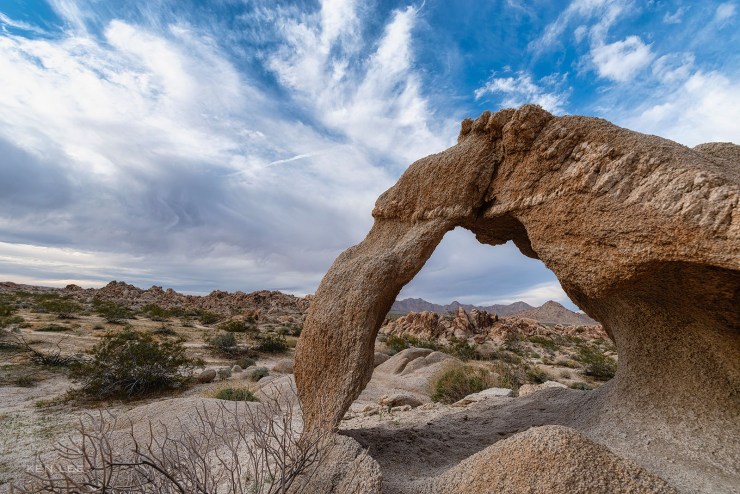
Cap Rock and Keys View
Cap Rock has a nature trail which is accessible to wheelchairs and strollers. This is a good place for beginners to try their hand at night photography as well without having to worry too much about stumbling in the dark. Lots of great rock formations and Joshua Trees abound.
Staying on the same road that you turned on for Cap Rock is Keys View, offering a nice view of the Coachella Valley below, where Palm Springs and Indio are.

Turn right and continue along Park Boulevard again. A short time later is a pull-out for Ryan Ranch. Take the short flat walk out to an abandoned ranch. This is picturesque, and there are numerous rock formations along the way, such as Tombstone Rock.
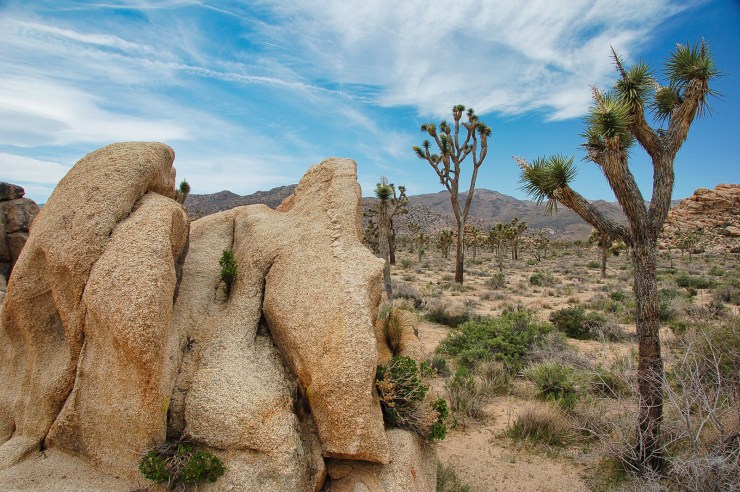
Farther along is the aptly named Skull Rock and Jumbo Rocks. This is another one of my favorite places for photography. The weirdly shaped rocks are inspiring. And as a bonus, they offer endless creativity when light painting at night.
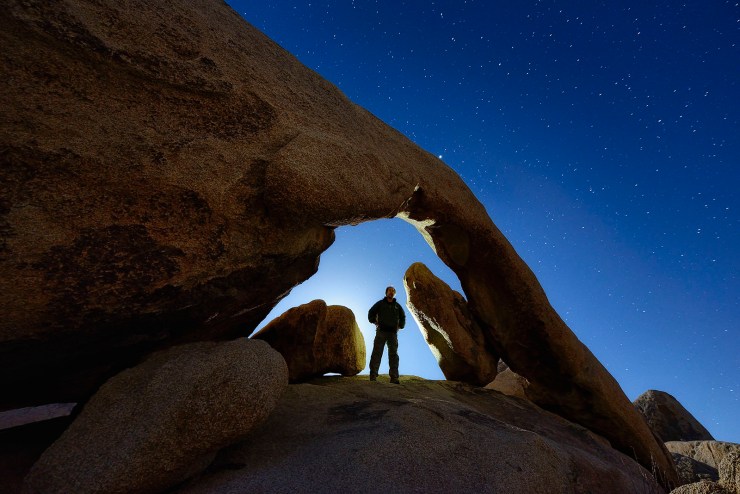
Along Pinto Basin Road
While continuing on, you will come across a turnoff called Pinto Basin Road. This road continues downhill toward Coachella Valley and I-10. Stop off at White Tank Campground to see the iconic Arch Rock, probably the largest arch in the Park.
Continuing downhill on Pinto Basin Road, you will also come across an amazing Cholla Cactus Garden on the right. These look amazing when backlit by the setting or rising sun. Don’t get too close to these plants or you will be picking the spines out for quite some time.
Death Valley National Park
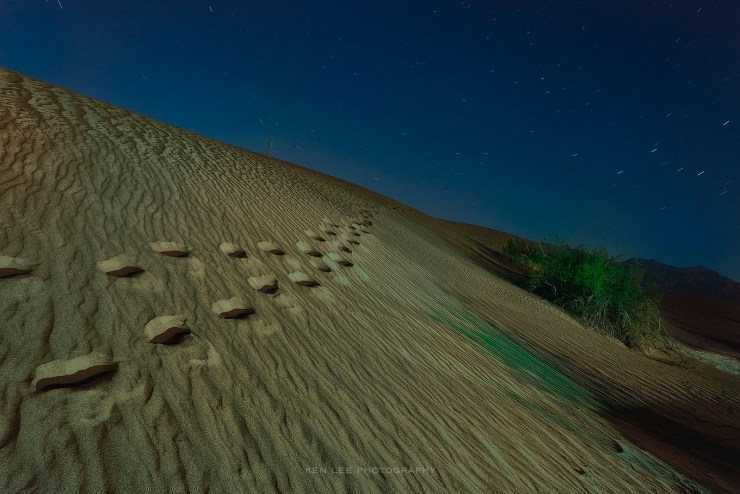
Many of the fantastic places such as Mesquite Dunes, Scotty’s Castle, Zabriskie Point, Badwater Basin and so on are well worth the visit. But I’ll cover two remote places that are worth the drive so you can consider taking a deep dive into the Park as well.
Racetrack Playa
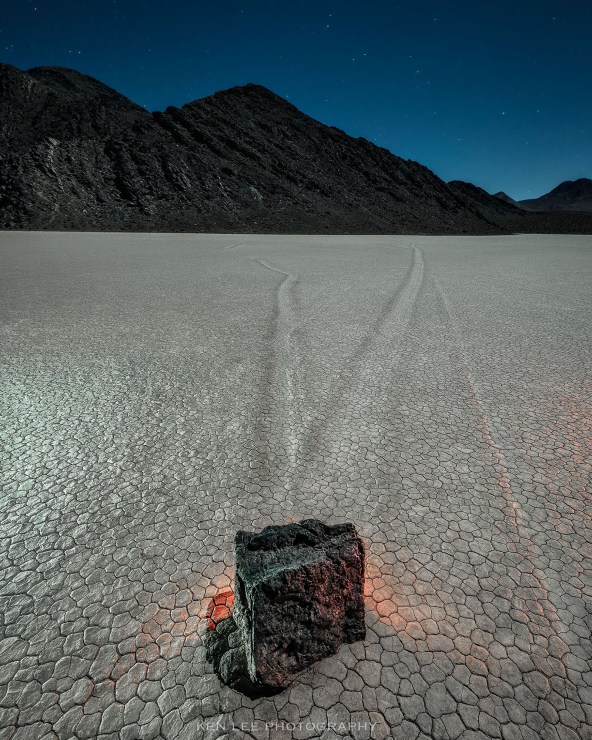
The mysterious sliding stones of Racetrack Playa are fantastic. For the longest time, no one knew how they slid across the parched desert floor. UFOs? Gremlins? However, two cousins named Richard and James Norris discovered the secret. For them to move, it requires a precise combination of rain, freezing temperatures, thawing and wind.
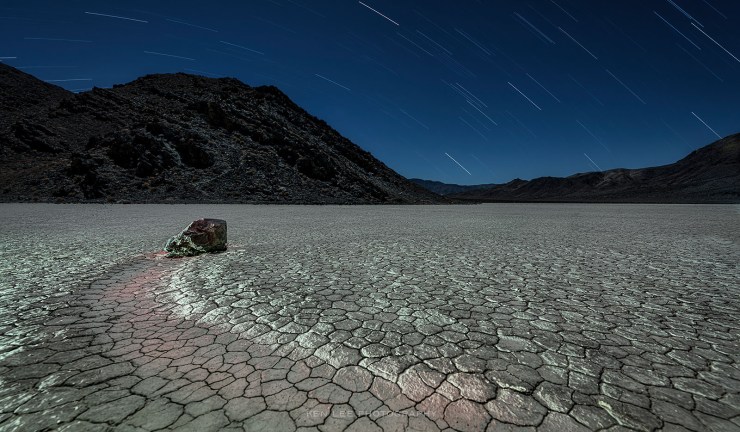
Racetrack Playa is remote. It can take almost three hours from Furnace Creek despite being less than 90 miles away. This should already tell you something.
After Uebehebe Crater, which is well worth a stop, the road gets rough. It’s not so much that it requires a high clearance vehicle, although that is helpful. It’s that there are lots of sharp rocks. Many people get flats here. If you go, prepare accordingly. I would recommend at least one spare tire, maybe two. I know two people who have gotten two flat tires.
Or rent a Jeep at Farabee Rentals and Tours and bypass the stress.
Like with many outdoor photos, sunset, sunrise or at night are often best. Get some of the texture of the hard-packed floor. And whatever you do, never drive your vehicle anywhere but the dirt road.
Wildrose Charcoal Kilns
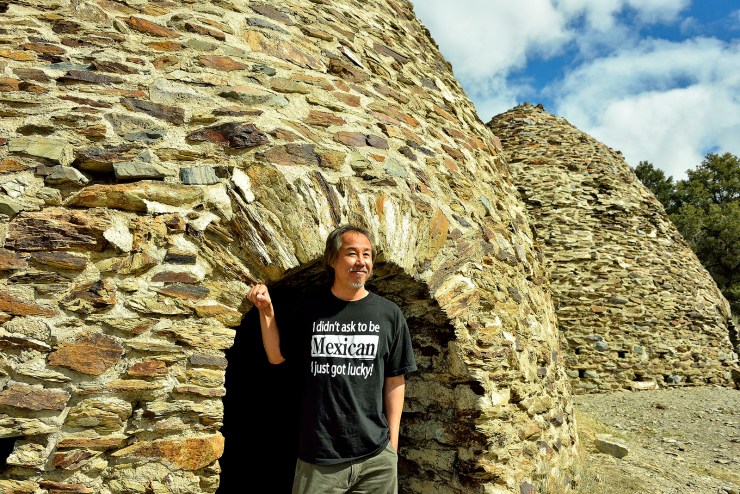
The second location is Wildrose Charcoal Kilns. This is also remote, about 90 minutes from Furnace Creek. However, the road is paved the whole way. Take the winding road through the mountains to the charcoal kilns, up at 6,800 feet. Coming here is a great way to escape the heat during the summer.
The 10 charcoal kilns were built by the Modock Consolidated Mining Company. They were built to provide fuel for two lead/silver smelters — about 25 miles away. These 25-foot tall kilns were used only for a couple of years. And almost 150 years later, one can still smell the burnt charcoal.
Salton Sea
I could write a whole article on the Salton Sea alone. Whether it’s broken piers, abandoned buildings melting into the earth, odd art installations, mud pots or Salvation Mountain, the place is fantastic for photographers in search of the unusual.
Salvation Mountain
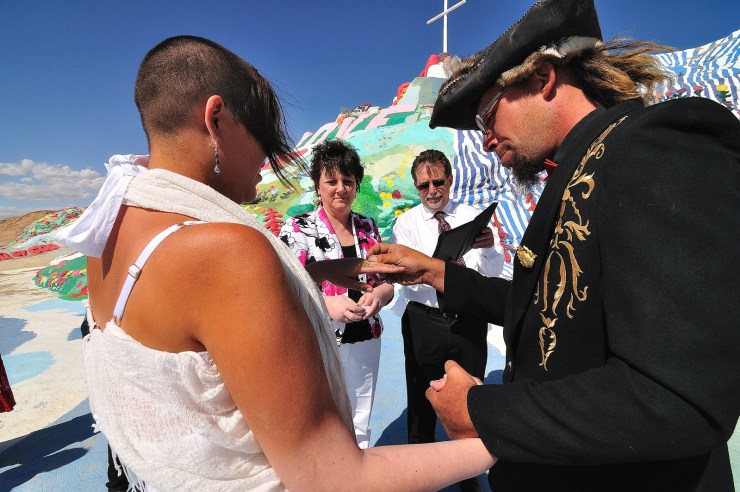
Leonard Knight created Salvation Mountain. He spent three decades joyously painting religious messages on a tall mound of adobe. Knight built his mountain using adobe mixed with straw to keep strengthening the mountain. Knight believed that he had put more than 100,000 gallons of paint on his mountain to combat erosion of wind and rain.
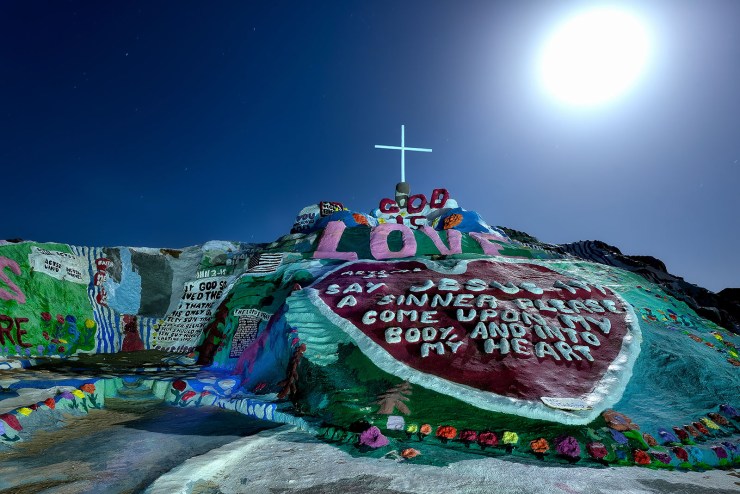
Borrego Springs
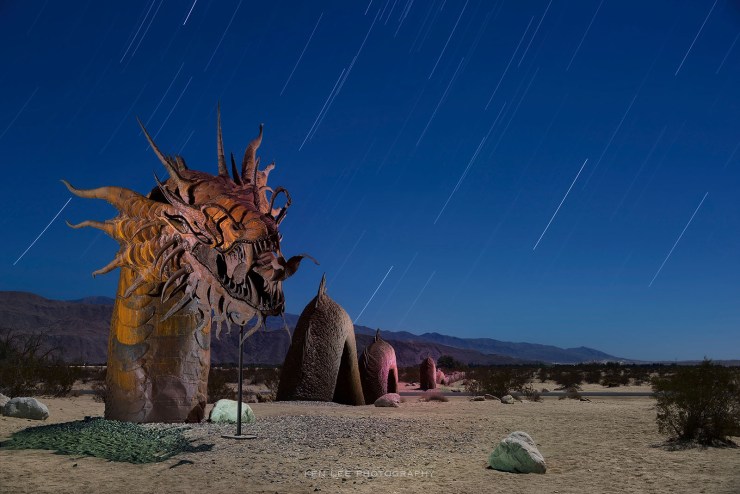
Borrego Springs is about 45 minutes from Salton City, along Salton Sea and 1:15 from Salvation Mountain. This tiny town has over one hundred metal sculptures of mostly animals created by Ricardo Breceda. Explore these north and south of the town.
In town, I like eating at Red Ocotillo’s and Carlee’s. Sometimes, though, there’s nothing like carne asada fries at Los Jilberto’s Taco Shop.
Anza-Borrego Desert State Park
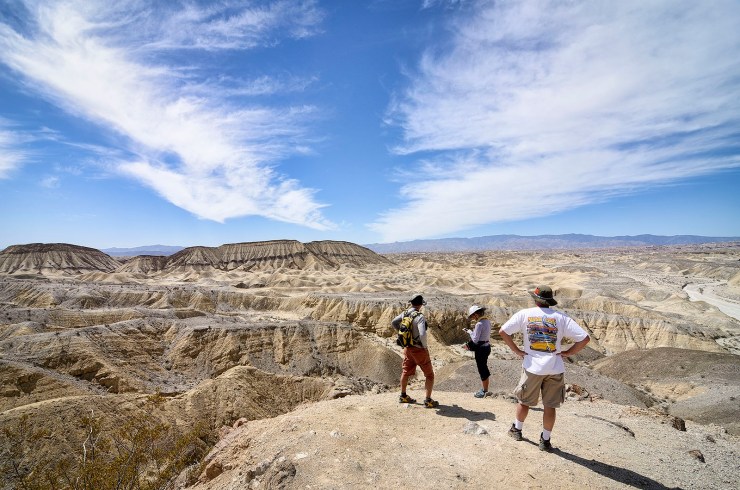
Nearby Anza-Borrego Desert State Park is a rather large state park. I believe may be the only state park in California that allows visitors and even camping at night. This is a great place for night photography or desertscapes. Everything is spread wide apart. I like the wind caves and the slot canyons quite a bit.
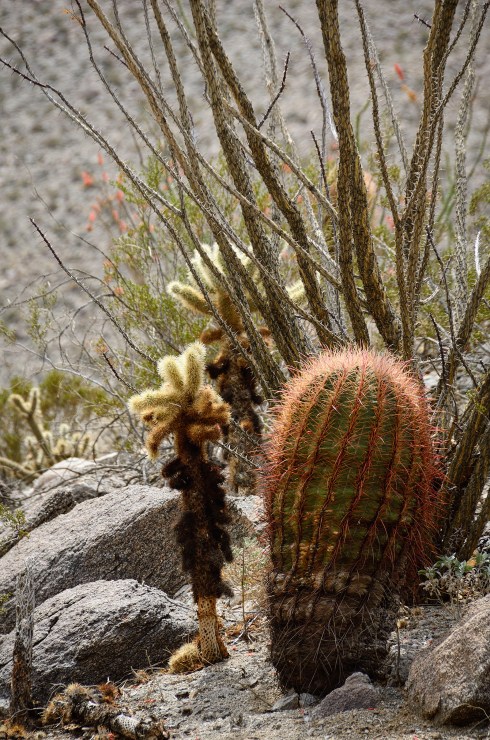
A hot tip for seeing borregos, or bighorn sheep is to walk along Palm Canyon Trail, which leaves right out of the same area where the visitor’s center and campground are located. I have been there three times at various parts of the day. All three times, I’ve seen bighorn sheep. I believe they come out more often near the end of the day.
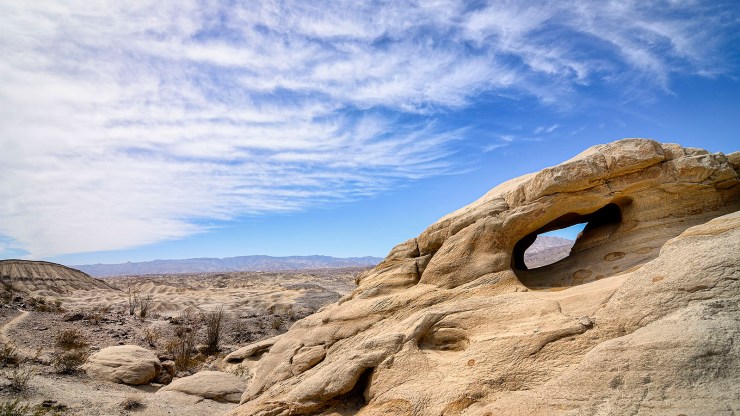
I hope that you enjoy California and many of its beautiful, photogenic opportunities. Let me know if you have a favorite California desert place in the comments below!
Tell your story with the second annual Visual Storytelling Conference!
Experience four days of interactive, online training sessions featuring a range of educational content with experienced photographers and content creators. This free event kicks off with a series of technical boot camps to build essential skills, followed by live, online sessions on photography, video, business and social media. Join live from March 10-13, 2022!
